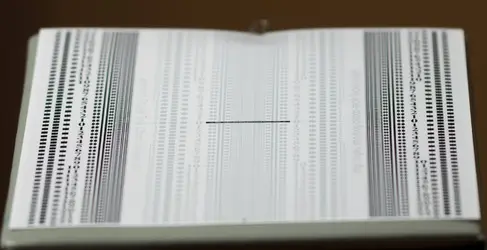Mathematically, your "equivalent" aperture DOES change when you mount a full frame lens on a cropped sensor. The sensor isn't as wide as the full frame sensor.
Aperture is the relationship of the width or opening of the lens to the length.
So a f2.8 lens is mathematically identical if you mount it on a full frame or Crop sensor. At least when speaking of the lens itself. The image sensor however lowers the diameter which changes the aperture (WRONG).
So, a full frame 70-200 f2.8 lens will function like it was a f4 lens on a crop sensor. This is because the sensor size is smaller.
The APS-C (cropped) sensor is not utilizing the entire diameter of the lens. Thus, the math changes.
A crop sensor basically narrows the diameter of a "full frame lens" because there is unused space.
No, this is getting worse.

f/stop is focal length / aperture diameter. It is NOT even about the sensor. the lens does not change in any way when placed on any camera. That would be a silly notion.
Nor does the focal length change if on a cropped sensor. You need to realize what Equivalent focal length actually means.
Assuming same lens is used, at same distance, all that a cropped senor changes is the field of view. The reasoning is: The cropped sensor sees a smaller cropped view, a more narrow view than if uncropped. That is what cropped refers to. But to compare it, we can only compare the same size image of the same view on both sensors. To do this (to see the same view), the uncropped sensor would need to use a lens longer than the uncropped sensor. Compared to the uncropped view, that same lens (cropped smaller by smaller sensor) superficially appears as if a longer lens, so which the uncropped needs now to see the came cropped view. That longer lens on uncropped sensor is called the Equivalent (view) of the cropped sensor (which is as is). The term Equivalent applies to the uncropped sensor.
The ideas is, if you crop ANY IMAGE, ANYTIME LATER in your editor, and then enlarge it back to compare as the same size again, that enlargement appears as a psuedo telephoto view (as if a longer lens). Same applies the the smaller cropped sensor too. But instead, all it is a smaller cropped image, enlarged more later.
A cropped sensor can NOT utilize the entire diameter of the 35mm lens.
Thus you have to apply (multiply) the crop factor to BOTH the aperture and the focal range.
Following your logic, my iPhone (with a 2.0 aperture) will have the same bokeh as a full frame Nikon at the same focal range.
We ALL know that isn't true.
You are correct that a cropped sensor changes the field of view. But a cropped sensor DOES affect the aperture rating.
If you have a 100mm lens, with an iris (diameter) of 25mm, you have a 100mm f4 lens - On 35mm ONLY.
Since a crop sensor camera cannot use the full opening (in this example it is 25mm) you apply the crop factor to the aperture as well as the focal range.
Aperture ratings are based on 35mm. NOT cropped sensors.
Otherwise, if what you're saying is true, all these "point and shoot" f2.8 cameras out there with crop factors of 3x, or 4x would produce the same bokeh as a 2.8 lens mounted on a 35mm (full frame) camera. Everyone knows that isn't the case.
C'mon buddy. We are talking basic math here. The entire formula for how aperture is determined is based on a 35mm format. The moment you change that format, you have to apply the same ratio to both the focal range and the aperture to find the 35mm equivalent. The point you seem to be missing is that a 17-50mm f2.8 lens for an APS-C camera is NOT rated for an APS-C camera/sensor. That rating is still based on 35mm or full frame. The moment you mount that 17-50mm lens on a cropped sensor, it will function as the 35mm or full frame equivalent of a 24-70 f4.
I'm not saying its not a 2.8 lens. I'm saying the formula you're basing it on has to change.
So, if you're comparing only cropped sensors to cropped sensor lenses, its not confusing. But if you're attempting to say compare a lens for a cropped sensor to the 35mm (full frame) equivalent, you will find that my math is correct. You not only multiply the focal length to the crop factor, you also multiply the aperture by the crop factor. If you change the focal length (becuase you're mounting to a crop sensor) you also change the aperture. Aperture is determined by focal length. You cannot change it without affecting the aperture.
I understand you're looking at this from someone just thinking you're digitally cropping into an image. But the aperture value is also changed.
This isn't as noticeable on the APS-C format. But if you think I'm lying, look at cameras with a f2.8 lens with a 3x or 4x crop.
I don't know how much more clear I can make it.





















